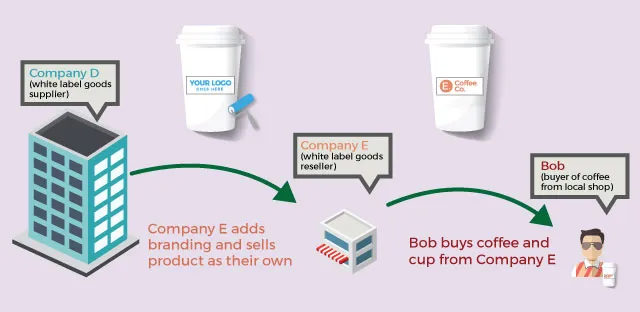

What Are White Label Products and How It Works

The White-label products and services are kind of re-brandable, and re-sellable items that are produced, branded and sold by one company but are rebranded and resold by another company.
The White-label providers develop a product or service in order to be rebranded by a re-seller company so that the reseller can re-sell it as their own products to the end customers.
Well, there also different types of White-labels.
Types of White-labels
- B2B white-label: The products or services are provided by a white-label company and are sold to the re-seller and the re-seller re-sells it to end user, a company.
- B2C white-label: The products or services that are sold by a company and resold to the end user, a customer.
- White-label SaaS: The rebrand-able software that is hosted over the internet and is licensed on a subscription basis like ibinex.com, that provides the white label cryptocurrency exchange software.
Let’s understand a white-label product in a better way by knowing how this white-labeling actually works.
How white labeling Works
As mentioned above, the White-label items are produced by a company or a provider to be rebranded and are resold to the end customers. In simple words, it can be explained as White Labeling is when the brand or logo is removed from the end product of a service or brand and instead use the branding requested by the purchaser.
Understanding it with an instance will make it clearer, consider any store for an instance let’s consider Amazon, the popular online store where you can find all kind of products from grocery to fashion and electronics that are sold under a great value brand. But does this mean that the Amazon produces all of those products? No, not at all, right! They simply have various associations with companies that are willing to provide the products in Great Value Packaging instead of their own on Amazon’s behalf.
So, this is what white labeling means and a product that has undergone white labeling is called White labeled products. Not just online stores, but also in real time stores like Walmart, D-Mart you find the white labeled products.
But why does a company go for white-labeling? Why is there a need for a product to get rebranded? Are some of the cropping up question you might like to get answered. So, let’s know the need for white labeling.
Need for White Labeling
White-Labeling gives a company or a provider access to a large distribution network through their reselling partners, and which in turn lets the resellers expand up their service line without any hassle of producing their own goods from the scratch.
So, basically, the key concept of white-labeling is anonymity, as customers who buy the end products are not aware of the original producer of the product. So, this way many goods and services are white-labeled and resold by big brands without the customers even realizing it.
Let us take an instance to understand the need for white-labeling.
For instance, do you ever buy a product that has a brand name you never heard of? Never, right? Consider such brand as XYZ. Now, if the producer of xyz sold the products to popular brand and the same product is now labeled under a popular brand. Would you buy it? Definitely! without even realizing that it is the product form xyz brand. And here the XYZ brand is known as the provider of the white-label product.
So, let’s hope you got a better understanding of white-label products and how they get rebranded.


